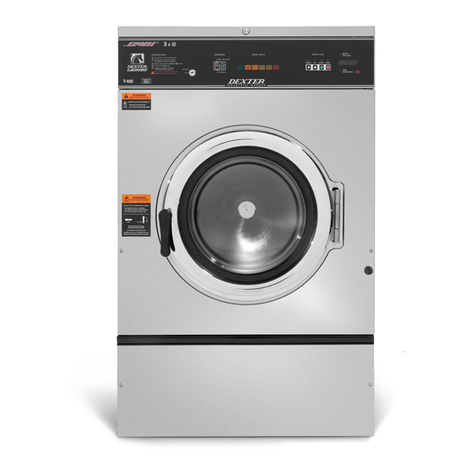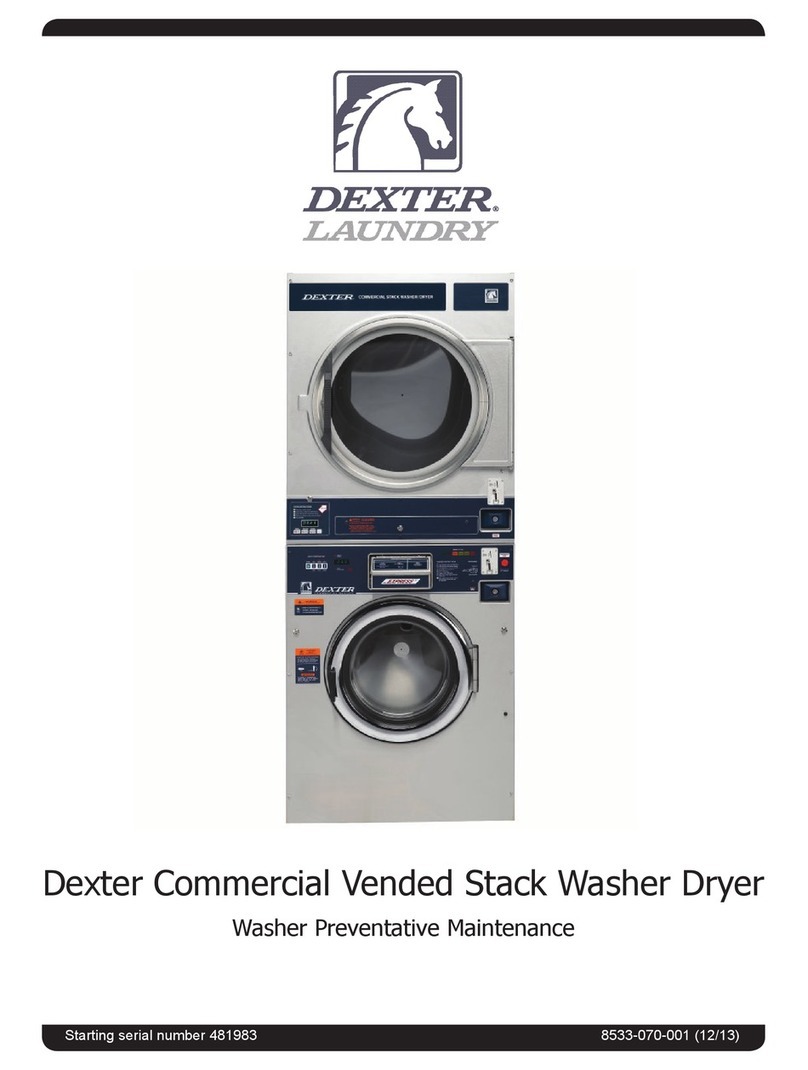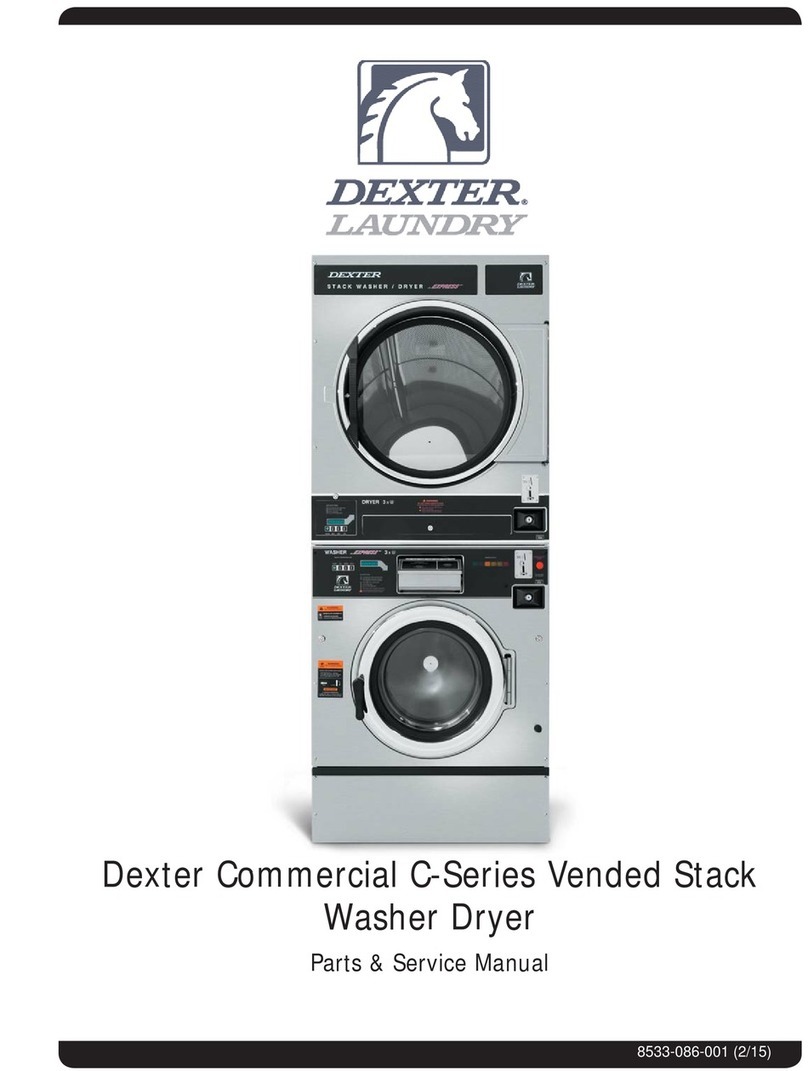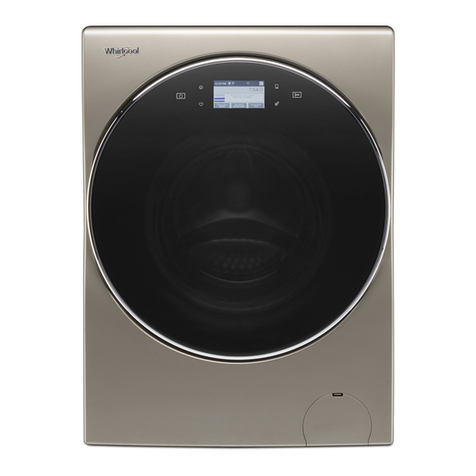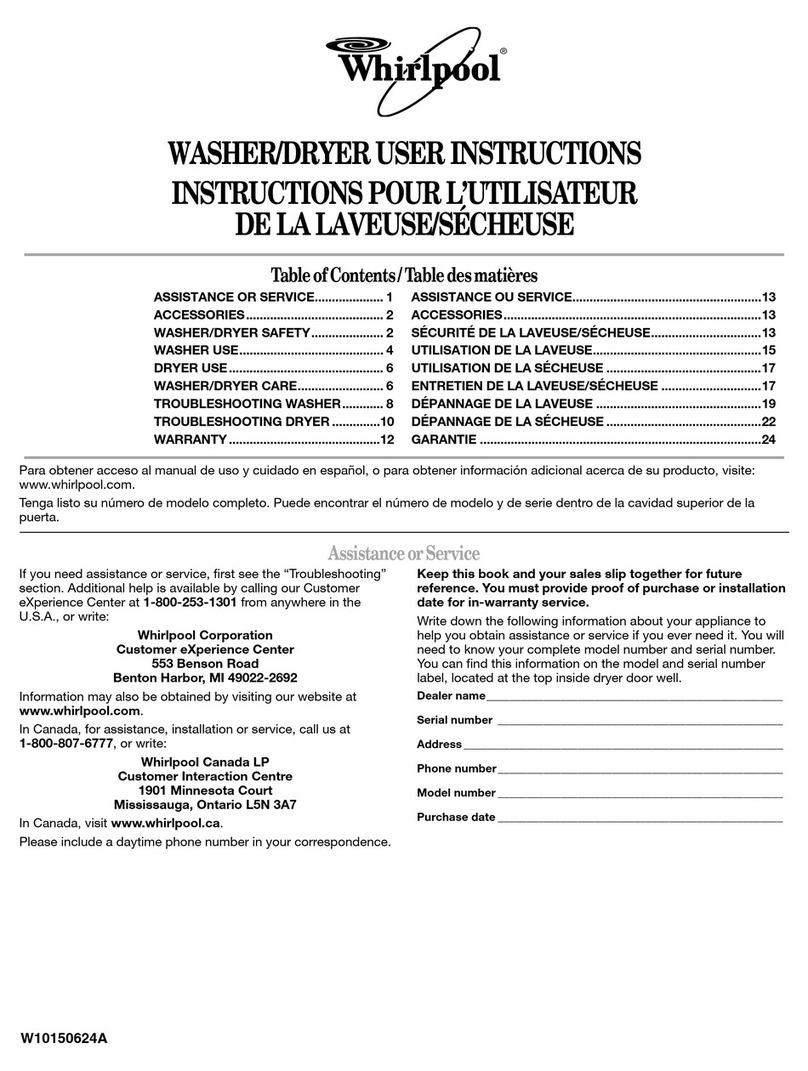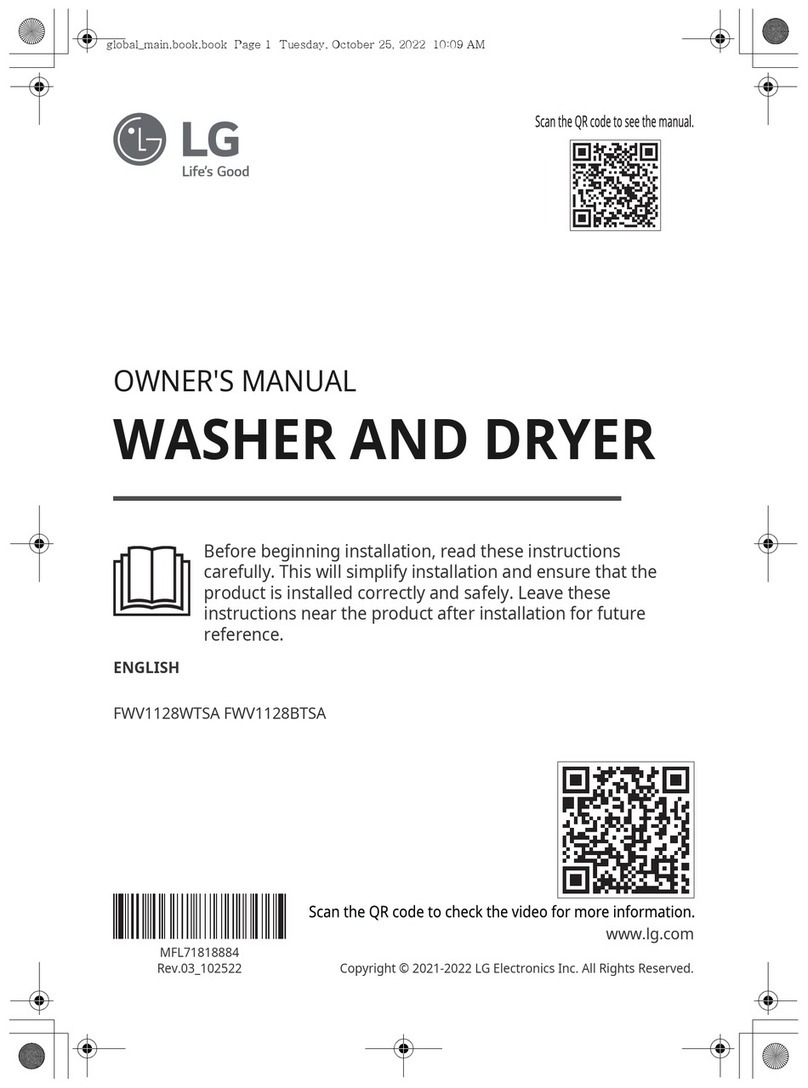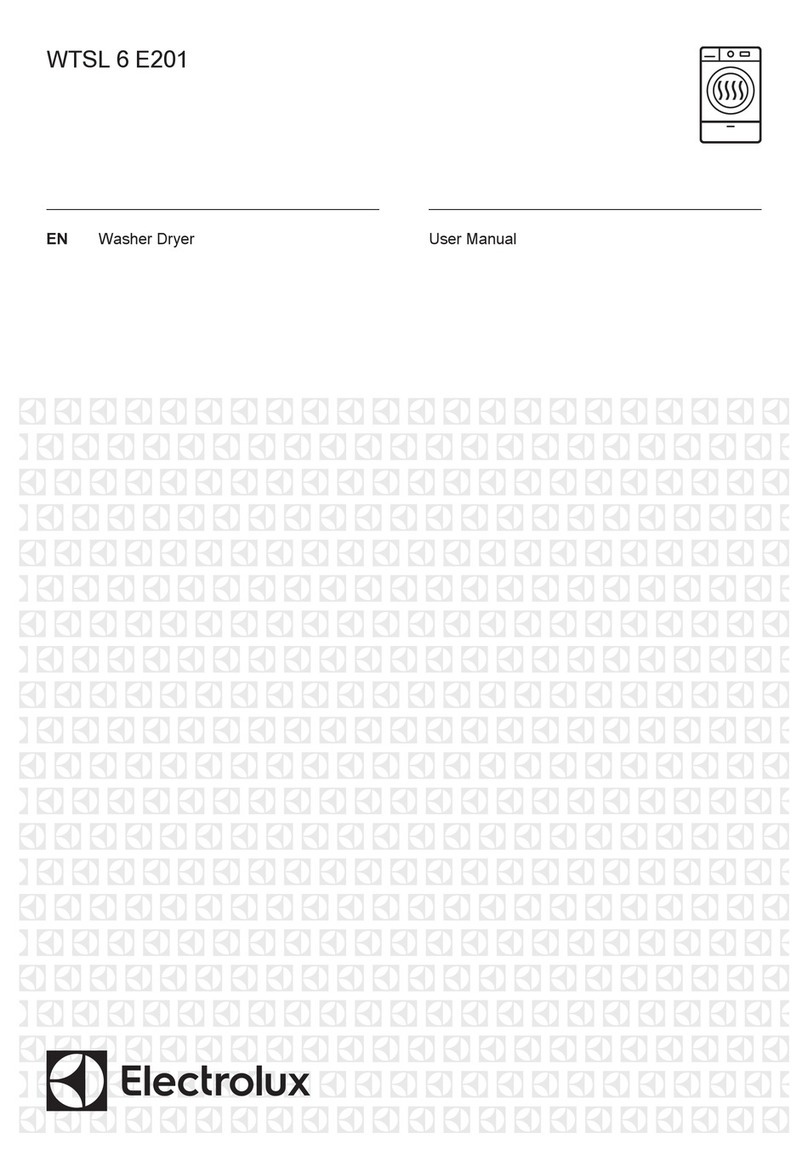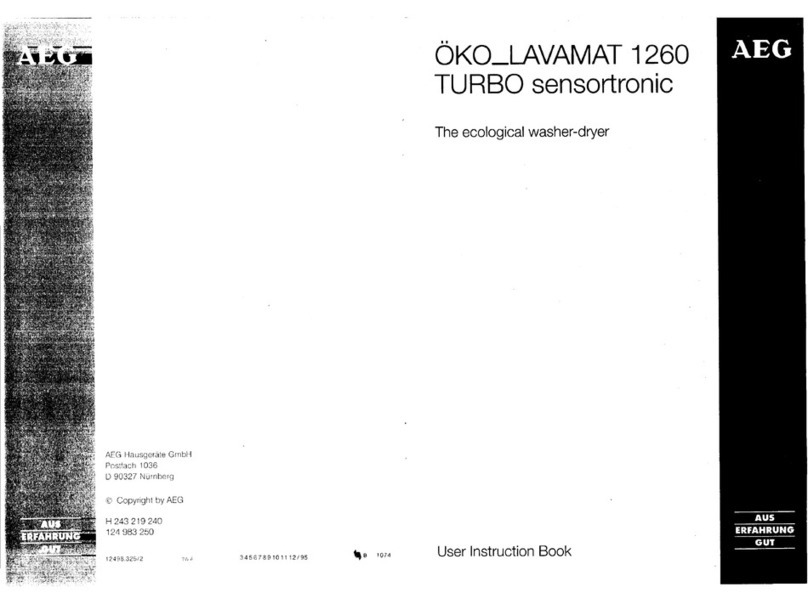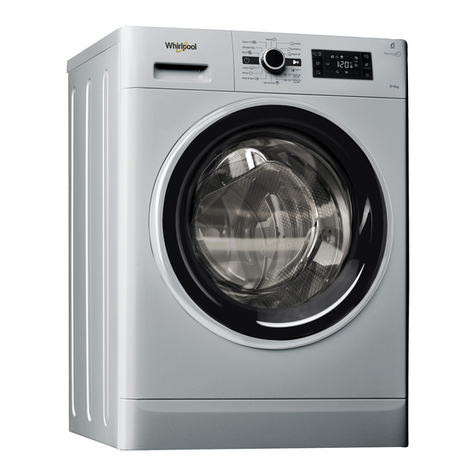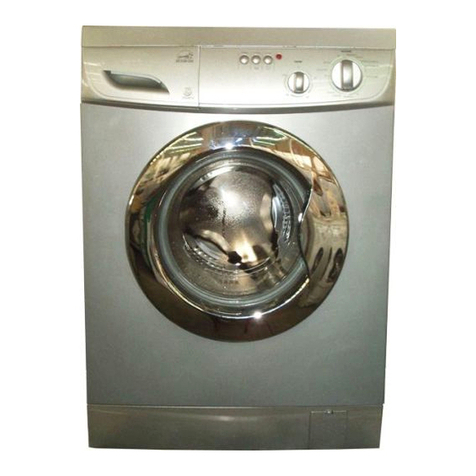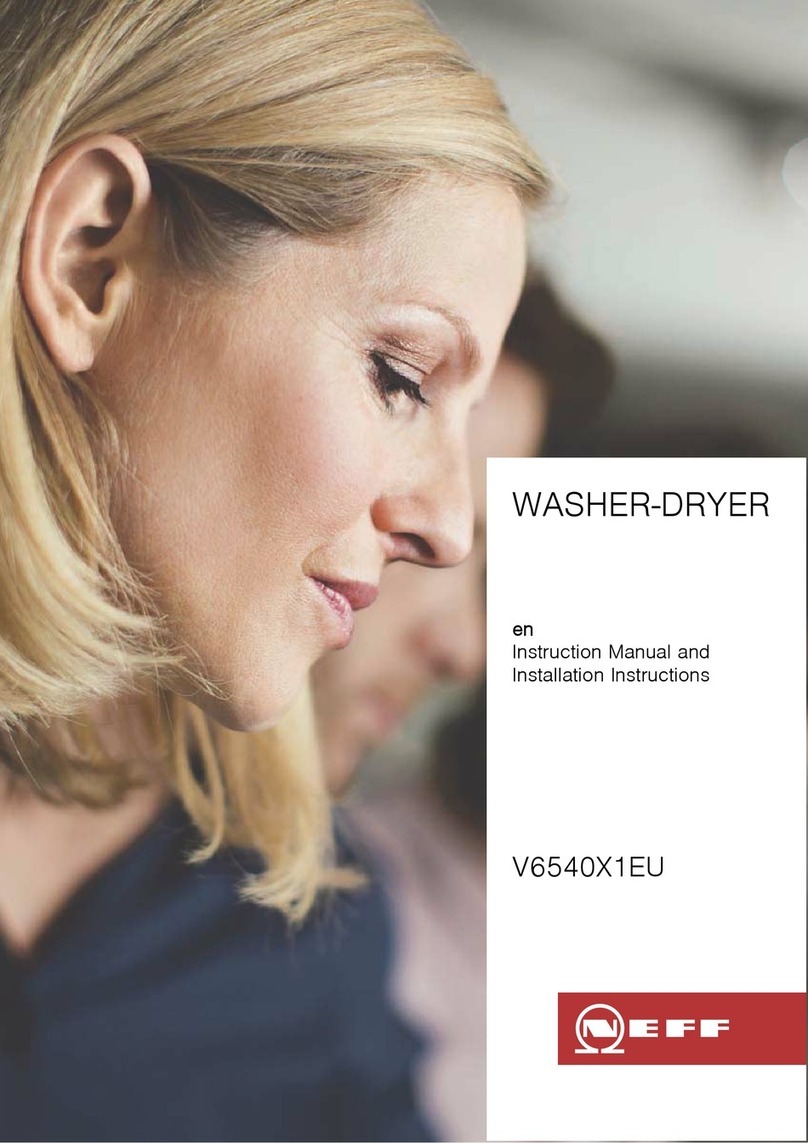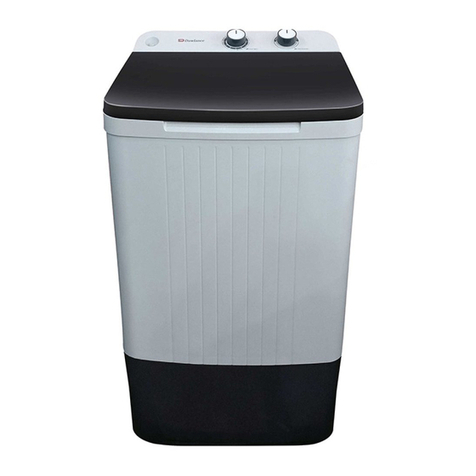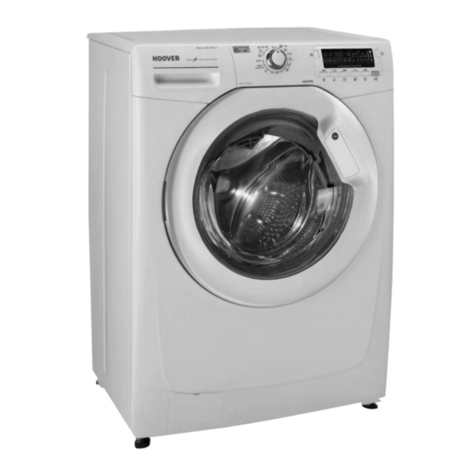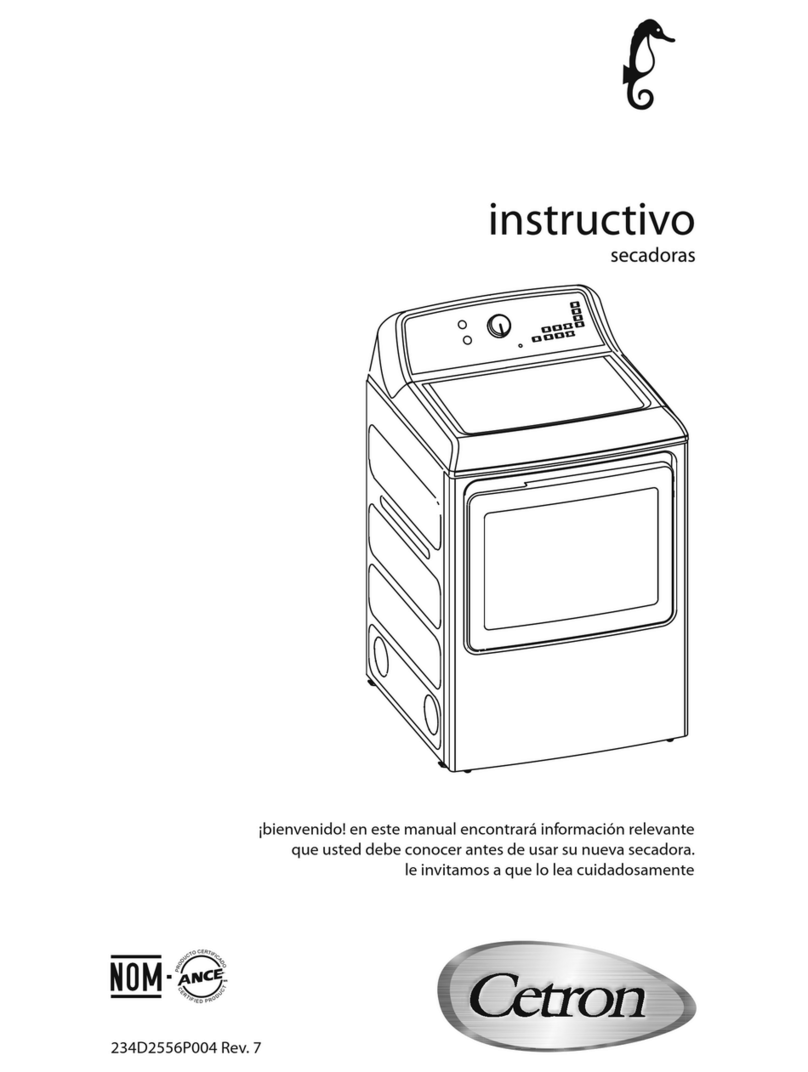Top Panel Removal .............................................45
Front Panel Removal...........................................45
Back Panel Removal...........................................45
Drain Valve Access .............................................45
Drain Valve Cleaning...........................................46
Masking Ring (Door Lock Cover)
Removal ..............................................................46
Detergent Dispenser ...........................................46
Vaccuum Breaker/
Air Gap ................................................................46
Water Valves .......................................................46
Door Lock Assembly Operation..........................47
Adjustment for the Door Lock
Assembly.................................................... 47 & 48
Adjusting the Loading Door.................................49
Loading Door Removal .......................................49
Loading Door Hinge Removal.............................49
Loading Door Disassembly.................................50
Loading Door Reassembly..................................50
Control Panel Name Plate Decal ........................50
Name Plate Removal ..........................................50
Re-Installation of Name Plate .............................50
Outer Cabinet Removal....................................... 51
Door Locking Solenoid........................................52
Thermoactuators .................................................52
Lock Thermoactuator ..........................................52
Unlock Thermoactuator.......................................52
Drive Belt Removal..............................................52
Tub Back, Bearing and Cylinder Assembly.........53
Basket Pulley, Bearing Housing,
Water Seals & Tub Back ....................54 & 55
Drive Motor Removal...........................................56
T-300 Bolt Torque Chart......................................56
T-400, T-600, T-900 & T-1200 Bolt
Torque Chart ................................................57
Bearing Housing Assembly T-900 & T-1200.......58
T-900 & T-1200 Cylinder Basket Assembly ........59
Reassembly T-900 & T-1200 Cylinder................60
55 & 75 Pound Water Seals................................61
Outer Tub T-900 & T-1200...................................61
Section 6:
Machine Electrical & Wiring Schematics
Start Circuit..........................................................64
Fill Circuit.............................................................65
Wash Circuit ........................................................65
Drain, Rinse 1 & 2 & Final Rinse Circuit .............66
Extract Circuit......................................................66
Thermoactuator and Shake Out Circuit...............66
End of Cycle Circuit.............................................66
Control Mounting Trough.....................................66
Main Data Communication Cable.......................67
Circuit Breaker/Fuse............................................67
Main Control Printed Circuit Board......................67
PCB Transformer Step Down..............................67
Controls Transformer...........................................67
Main Relay Printed Circuit Board........................67
Pressure Switch ..................................................68
Power Connection Terminal Block......................68
LED Printed Circuit Board Temperature & Start/
Display Push Button.....................................68
Emergency Stop Button & Switch Assembly ......68
Add Bleach LED..................................................69
Delta Variable Frequency Drive ..........................69
Delta VFD Motor Leads.......................................69
Delta VFD Dynamic Braking
Resistors .............................................................69
Delta VFD Cooling Fan .......................................69
Coin Double Load 18 Pound
120 Volt Wiring Schematic ..................................70
Coin Double Load 18 Pound
120 Volt Wiring Diagram...............................71
IEC Double Load 18 Pound 120
Volt Wiring Schematic ..................................72
IEC Double Load 18 Pound
120 Volt Wiring Diagram...............................73
continued on next page
Coin Double Load 18 Pound 208-240 Volt Wiring
Schematic..................................................... 74
(continued on next page)
3
Part # 8533-053-001 REV 4/09
continued from previous page
Section 6:
Machine Electrical & Wiring Schematics
Coin Double Load 18 Pound
208-240 Volt Wiring Diagram .................... 75
IEC Double Load 18 Pound 208-240 Volt
Wiring Schematic ...................................... 76
IEC Double Load 18 Pound 208-240 Volt
Wiring Diagram ......................................... 77
Coin Triple Load 25 Pound Wiring Schematic.. 78
Coin Triple Load 25 Pound Wiring Diagram..... 79
IEC Triple Load 25 Pound Wiring Schematic ... 80
IEC Triple Load 25 Pound Wiring Diagram .......81
Coin Maxi Load 40 Pound Wiring Schematic... 82
Coin Maxi Load 40 Pound Wiring Diagram...... 83
IEC Maxi Load 40 Pound Wiring Schematic .... 84
IEC Maxi Load 40 Pound Wiring Diagram Page.. 85
Coin Mega Load 55 Pound Wiring Schematic.... 86
Coin Mega Load 55 Pound Wiring Diagram .... 87
IEC Mega Load 55 Pound Wiring Schematic... 88
IEC Mega Load 55 Pound Wiring Diagram...... 89
Coin Magnum Load 75 Pound
Wiring Schematic ...................................... 90
Coin Magnum Load 75 Pound Wiring Diagram... 91
IEC Magnum Load 75 Pound
Wiring Schematic ...................................... 92
IEC Magnum Load 75 Pound Wiring Diagram... 93
Schematic........................................................ 94
Section 7:
Parts Data
A-Series Accessories ...................................... 97
Cabinet and Front Panel Group Part #
by Model ...........................................98 & 99
Rear View Access Part # by Model .........100-101
Cylinder, Seals & Bearings Part #
by Model ....................................... 102 & 103
Door Lock Part # by Model.................. 104 & 105
Loading Door Part # by Model............. 106 & 107
Water Inlet Part # by Model ................. 108 & 109
Drain Valve Group Part # by Model ................110
Water Inlet Valve Breakdown Part # by Model.. 111
Wiring Harness Part # by Model.....................112
Labels and Diagrams All WCAD Models ........113
Chassis and Drain Part # by Model ......114 & 115
Control Panel Part # by Model.............. 116 & 117
Integrated Easy Card Control Panel Part #
by Model ........................................ 118 & 119
Electrical Components -
Top Compartment ..........................120 & 121
Coin Handling Group Part # by Model... 122 & 123
Section 8:
Maintenance
Preventative Maintenance...............................126
4Part # 8533-053-001 REV 4/09
